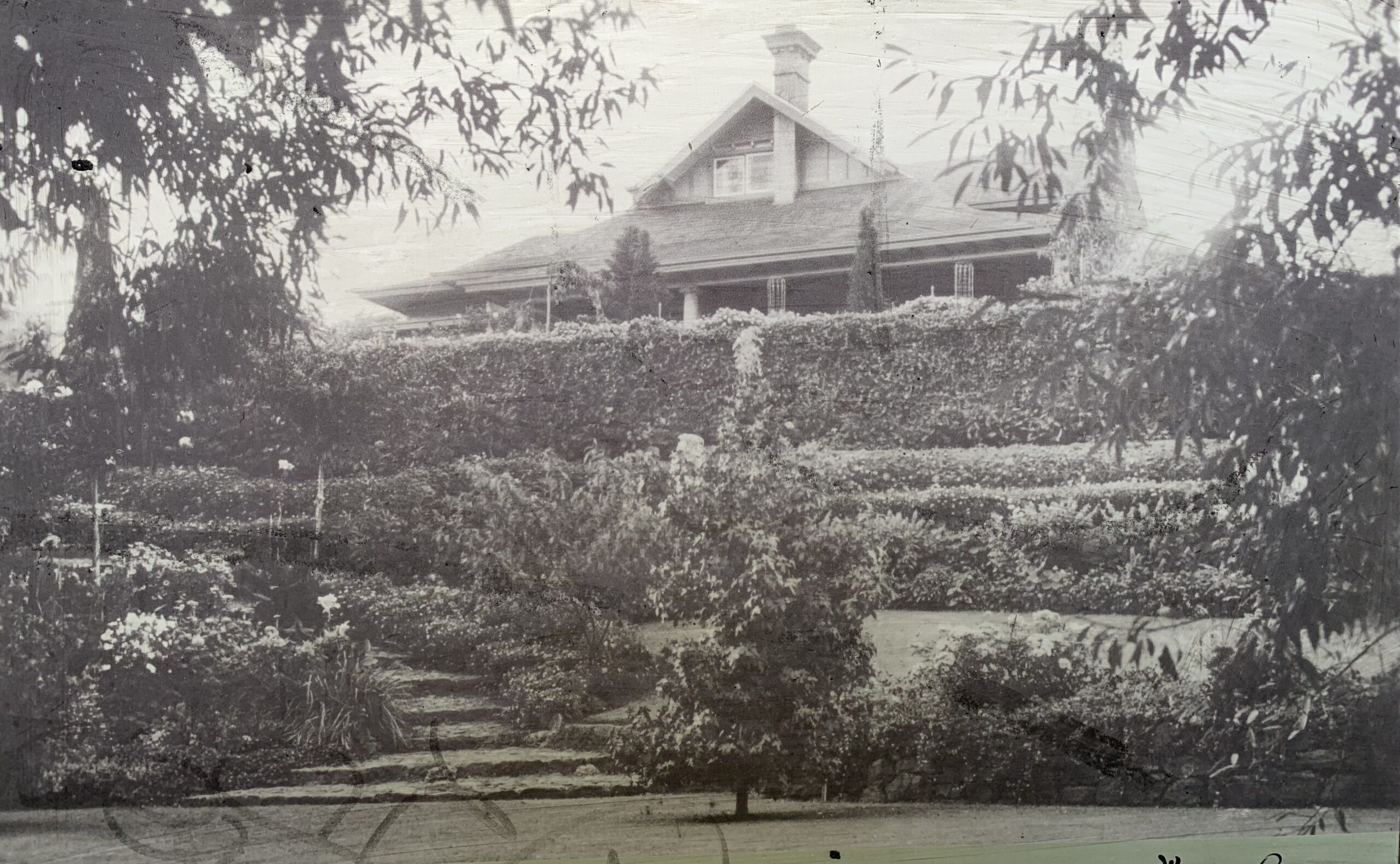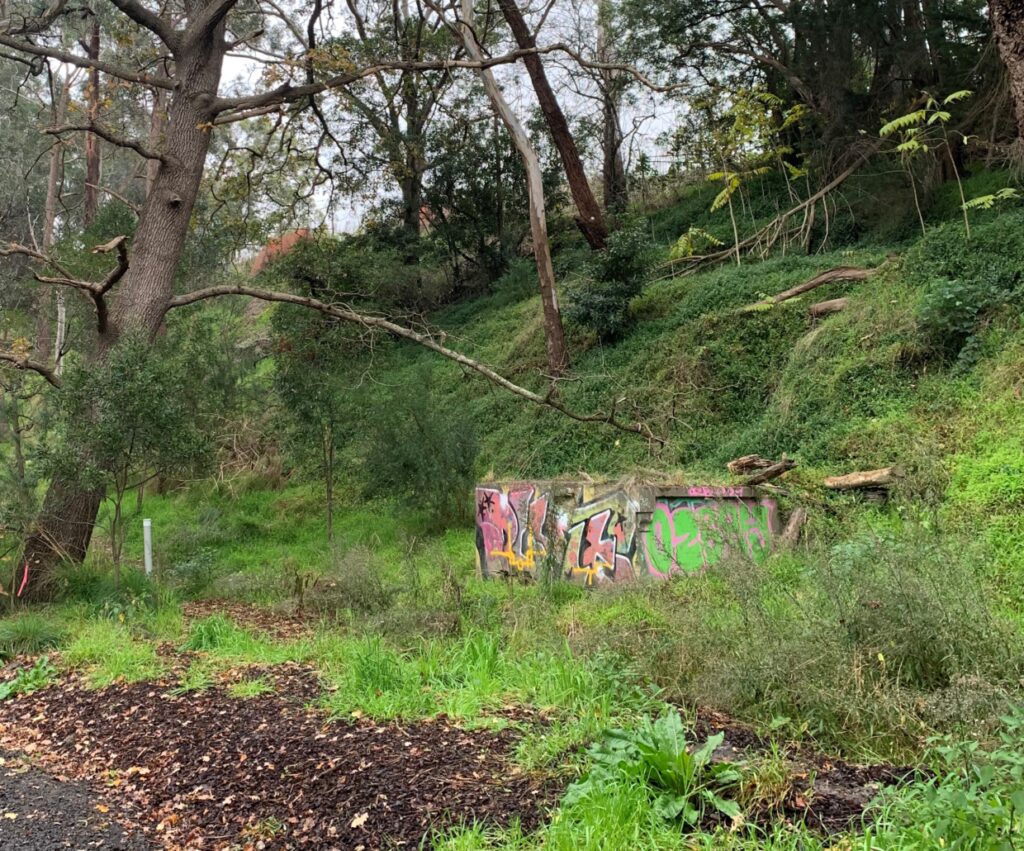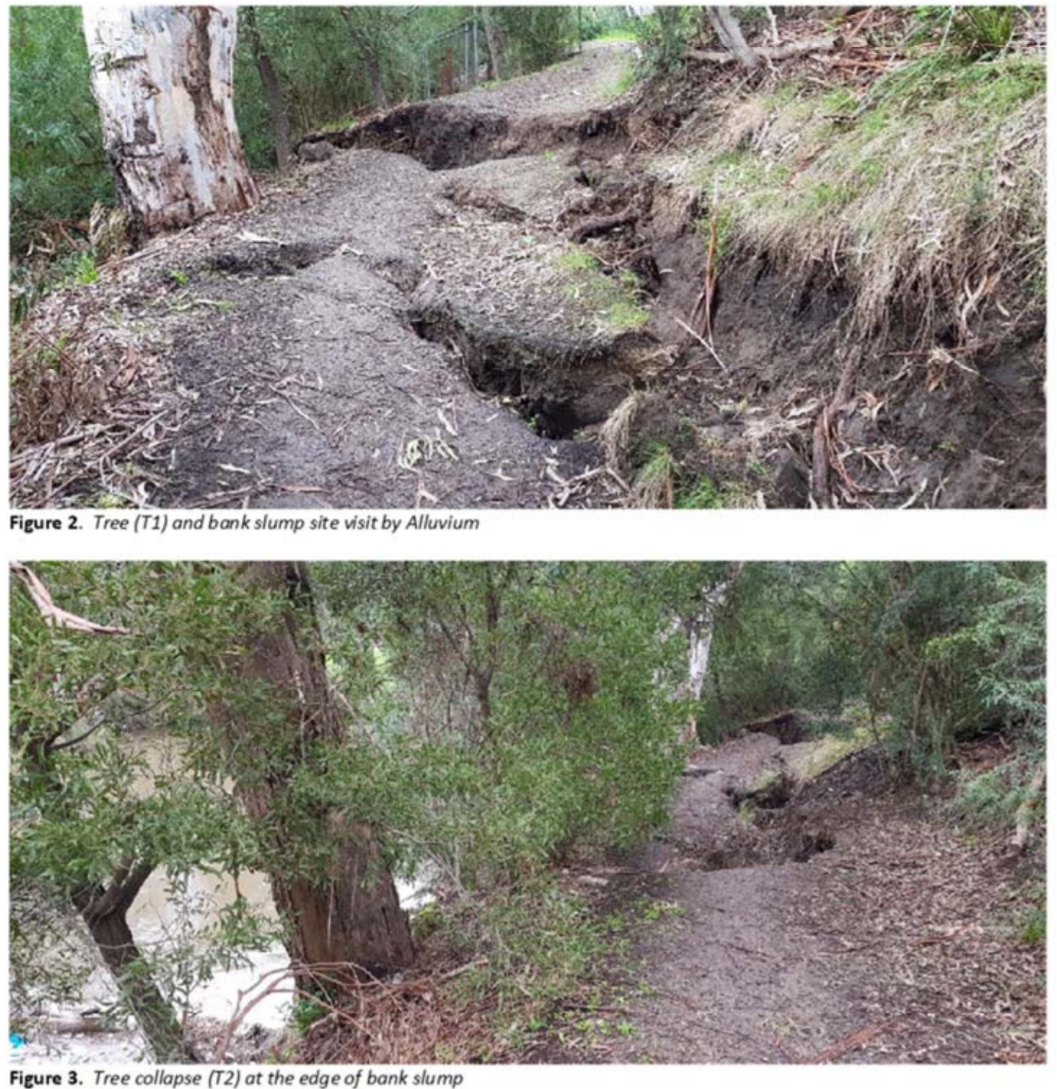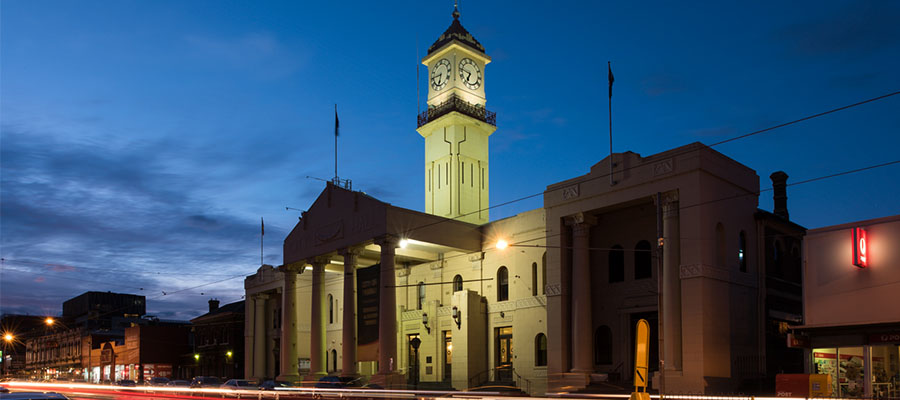Last spring and the spring before, the riverfront faced significant erosion. Can we end the standoff on riverfront rehabilitation before new runoff patterns upset the steep slope of industrial waste soil perched above the riverfront path?
When the Department of Environment, Land, Water and Planning (DELWP) resolved that the riverfront would remain Crown Land, and they would join with Yarra Council as a Committee of Management, APMAG heralded it as a win.
However, we are at a stand off, and these days – when ‘unprecedented weather events’ happen more often with less warning – letting problems wait is a risk.
Like the people of Lismore, Brisbane or Mullumbimby, we don’t know how long it will be until the next ‘unprecedented weather event’ occurs.
We do know last spring, development across the Paper Mill site changed water drainage patterns, and massive landslips took out mature trees as spring rains flowed down through ancient watercourses.
This erosion on the bank is minor compared to the potential risk of a landslide on the unstable, contaminated hill directly above it.

Preventing a toxic mudslide – rehabilitating the riverfront crest.
For decades, both the current developers, and Amcor before them treated the river’s edge as a private tip. They literally bulldozed problems – rubbish & dirt – up to the bank and over the side. As a result, the dirt is poorly compacted & highly contaminated.
To gauge how big the problem is, next time you walk the path look for the historical marker at the eastern end. This is the natural river crest, with a gentle slope and a series of blue stone retaining walls – seen here in an image from the 1930’s of the old Runnymeade estate.



Then walk west some 40 m to where the old creek bed has led to land slip over the past few years

The slope is steep here – made of layers of loosely compacted waste soil held together by younger trees.
We have already seen last year how building out the site has changed drainage behaviour. We know many sections of the Amcor crest line have industrial and asbestos waste issues.
We know the area is zoned for 1 in 100 year floods. We know last year and the year before spring rains caused the lower bank to slip and erode – taking out mature trees at the rivers edge.
We know enough to take action now.
If the same thing happened this spring to the steep, unstable upper slope of waste laced soil there is risk of a toxic mudslide.
This author was in the Northern Rivers during the recent Lismore floods that caught unawares a community experienced in flooding.
Winter has already been colder and wetter than normal. In a time when 1 in 100 year events happen more often with less warning, every day we wait to fix this is a risk.


What is stopping site rehabilitation – The stand off
While DELWP resolved to join Yarra Council on the Committee of Management, Yarra Council is cautious about accepting legal responsibility for the land before it’s rehabilitated. This is sensible. It is Glenville’s responsibility to hand over the land in a safe and sustainable condition.
Glenville is hesitant to do rehabilitation work before they know Yarra’s full final vision for the site. On the surface this is prudent – don’t spend money until you know what the customer wants.
The City of Yarra finds it hard to determine a site plan until they know what they can expect to receive from Glenville.
This means both parties implement watch & wait, or stopgap solutions:
- Monitoring, reports & investigation – necessary, but not sufficient
- Fixing site drainage down to the riverbank has been minimal.
- Containment for asbestos laced soil has amounted to tarp sized band-aids.
- Public accessibility & safety efforts often amount to some hazard tape and terse signage.
It’s a false argument, however, to say rehabilitation can’t start until the final vision is known. Basic rehabilitation to make the site safe, stable and ecologically sound is required, regardless of final aesthetic vision decisions.
It’s also a false argument to say we don’t know the final vision. We know the site must be safe, stable, sustainable and accessible. Sure – there are many exciting aesthetic decisions to make down the road about paths, tables, boardwalks or bush tracks. But there are a lot of basic, boring foundations that will be necessary either way.
What’s next – APMAG’s proposal
To break this impasse, APMAG proposes two actions:
1 – demand obvious, basic rehabilitation requirements all parties should be able to act on now
2 – hold a genuine and independent workshop to give real community input to Yarra on the full vision and move planning forward, to be implemented once basic rehabilitation is done.
Details for the workshop will be available shortly.
Do you think this will kick start action? Do you have a view on what should be done? Will you come?

Sustainable ecological resilience
This stretch of river is a very important link for people, animals and river systems.
Any natural environment in a city is precious, but the Yarra river is a vital corridor and this stretch is big, beautiful and lifesaving link. If this link no longer works – as a wildlife corridor, a native plant reserve, a water table, a bush site – the ripples would be felt right across the system.
The Yarra Riverkeeper Charlotte Sterrett met with APMAG representatives and outlined the vital role this stretch of river plays in the bigger river system.

As weather, water and development become more extreme and dynamic; people, plants, animals and water need ways to retreat, travel or adjust. Uninterrupted links of bush along the Yarra provides natural habitat corridors, prevent erosion, limit pollution and bring joy right into the heart of urban Melbourne.

The Riverkeeper organisation has experience and expertise in understanding the science behind river systems and in navigating the laws, rules and challenges of protecting and speaking for the river.
They have agreed to work actively with APMAG to help the Alphington community protect the river and push for practical, sustainable outcomes, and we look forward to working with them to get informed, useful community voices pushing for action to protect the river.
Watch this space
